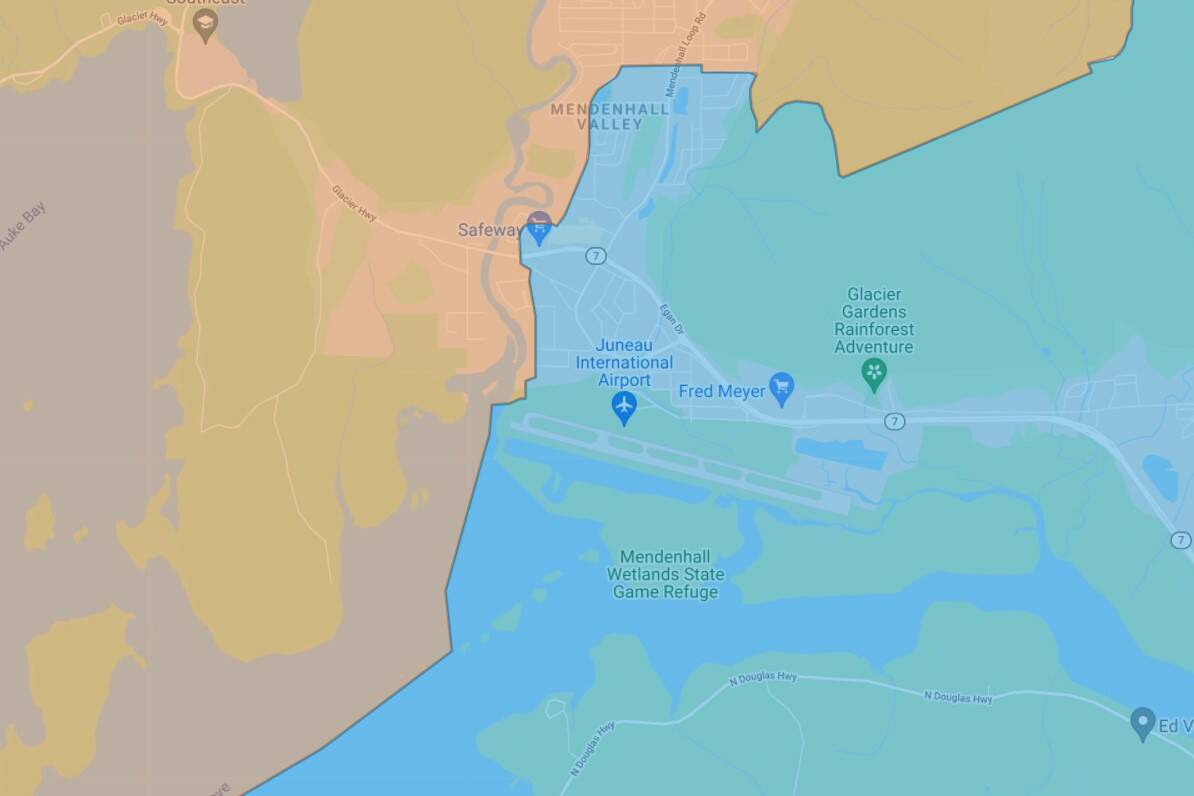An earlier version of this article incorrectly named a community refereed to by Rep. Andi Story, D-Juneau. Story refereed to the community of Skagway, not Haines. The Empire regrets the error.
The Alaska Redistricting Board is set to approve the final maps from the once-a-decade process of redrawing legislative districts, but litigation is likely to come following a contentious decision regarding district pairings for senate seats.
Every state senator covers a district made up of two Alaska House of Representatives districts. On Tuesday, the board voted to create two Senate seats each consisting of one Anchorage district and one Eagle River district. Eagle River is part of the Municipality of Anchorage but some in that community —including its current Republican Sen. Lora Reinbold —have called for the community to leave the municipality.
In an interview with the Empire Tuesday, Senate Minority Leader Tom Begich, D-Anchorage, said the Senate appointment process had taken a disturbingly partisan tone after a mostly nonpartisan districting process.
“We wanted constitutional maps,” Begich said of his senate caucus members. “Fundamentally, I believe the board created House maps that are constitutional, but I believe the pairing of the Senate is blatantly partisan.”
The most contentious decision, according to Begich, was the decision to pair two communities together that are separated by mountains. At issue is the pairing of House districts 18 and 24. House District 24 covers part of Eagle River and a large portion of Chugach State Park. District 18, however, is a comparatively small district in Northeast Anchorage. The House districts do touch each other, but the portion of District 18 immediately adjacent to District 23 is nonresidental or undeveloped land.
The proposal would also match Eagle Rivers District 22 with the North Anchorage District 21 which covers Joint Base Elmendorf–Richardson.
[As pandemic recedes, preventive care returns]
The deadline to approve the maps is Nov. 10.
Begich laid the blame for the partisanship at the feet of board member Bethany Marcum, who was appointed by Gov. Mike Dunleavy, and said he had spoken to caucus members who were concerned at the political turn of the board. It was Marcum’s proposal Tuesday not to pair the Eagle River districts together. Begich said he suspects an lawsuit will be filed either by the residents of Eagle River or Northeast Anchorage.
Marcum is the executive director of the Alaska Policy Forum, the Alaska branch of the State Policy Network, a national organization that supports independent, state-focused, market-oriented policy research organizations in all 50 states, according to the organization’s website. The first among Alaska Policy Forum’s seven principles of sound public policy is, “free people are not equal, and equal people are not free.”
“I think that board member Marcum has played her hand and her hand is blatantly political,” Begich said. “Quite frankly Chairman (John) Binkley has gone along with it, and that is sad, I had faith in the guy.”
But Binkley defended the board’s decision, telling the Empire in a phone interview Tuesday the process was guided by competent legal counsel and the board is comfortable with their decision.
“It’s a difficult process, and I know each time people are frustrated and upset,” Binkley said. “In every case it’s resulted in litigation. It’s almost an impossible task, and it’s highly charged in some cases. It’s unfortuneate, but it’s the best system that we have. The result isn’t something that everybody always agrees on.”
Binkley said he heard compelling testimony that many Eagle River constituents work at JBER and it made sense to pair those districts together. With one Eagle River district paired with Anchorage, Binkley said it made sense to do the same with the other. Many Eagle River residents commute to and work in central Anchorage, Binkley and many of them stop to shop in the district.
“People in Eagle River closely associate with south Muldoon,” Binkley said, referring to the District 18 area.
Overall, Binkley said the board was guided by the Alaska State Constitution which said districts must be contiguous.
Juneau’s changes
In Juneau the changes are less dramatic but there will be significant shifts. Currently, Rep. Sara Hannan’s, D-Juneau, district covers downtown Juneau, Douglas Island and Lemon Creek but also Haines and Skagway. Under the proposed final map, those communities would be moved into Rep. Andi Story’s, D-Juneau, district covering the Mendenhall Valley, Auke Bay and the part of Juneau north of the ferry terminal.
Under the proposed maps a new District 4, the district containing Douglas, downtown Juneau and Lemon Creek and currently represented by Hannan would extend into the Medenhall Valley to Haloff Way to the north and Riverside Drive to the west. In the proposed maps, most of the Mendenhall Valley is in the same district as Auke Bay and north all the way to Haines, Skagway and Klukwan.
Speaking to the Empire Binkley noted Juneau’s Senate seat was the only one in the state not to undergo any voter changes, and that Juneau’s senator, current Democrat Jesse Kiehl, will be up for reelection in 2024.
A previously proposed map would have moved Story and Hannan into the same district, but the final version of Juneau’s proposed House districts keep the two lawmakers in their respective districts with significant changes to boundary lines. The current boundary lines, adopted in 2013 after several years of litigation, cuts off Hannan’s District 33 just past Lemon Creek.
Story told the Empire Tuesday she was partially pleased with the revisions but noted Skagway residents had asked to be put in the same district as downtown Juneau, citing similarities between tourism-based economies.
“Many people testified one way and the board did not do what they recommended,” Story said. “I really do think it would be good to have a nonpartisan redistricting board.”
• Contact reporter Peter Segall at psegall@juneauempire.com. Follow him on Twitter at @SegallJnuEmpire.

